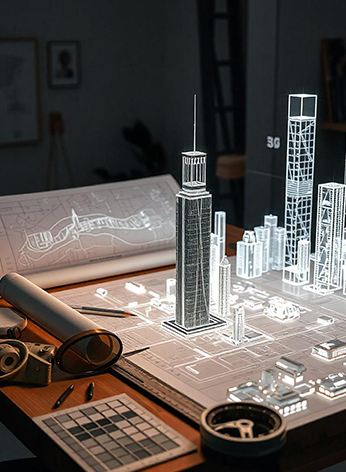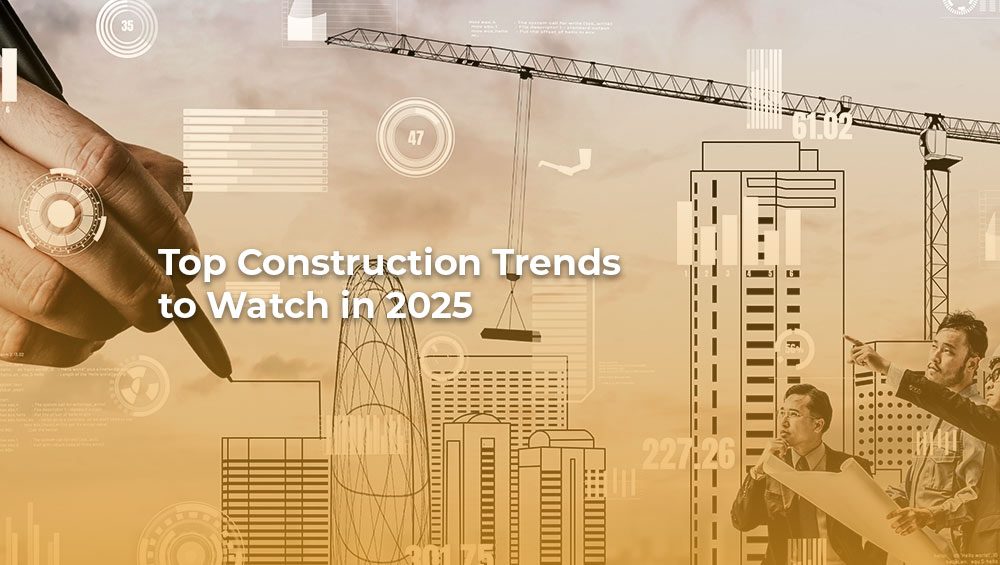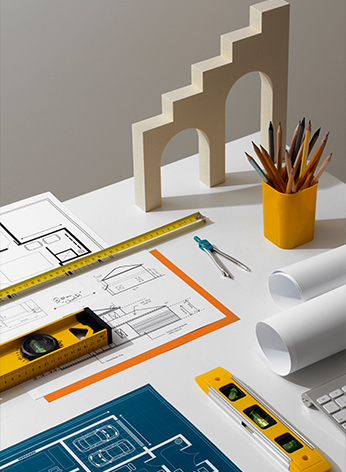As we head towards the year 2025, it is certain that the construction sector is undergoing a transformation at an increasing speed and this change is majorly due to technological advancements, emerging environmental concerns, and the quest for efficient as well as sustainable alternatives. In this regard, the top construction trends are essential for the businesses, contractors, and developers as the market is dynamic and innovative friendly competition is inevitable.
Over the past few years, there has been an increase in the use of smart construction technologies, modular building techniques, and environmental friendly efforts. Such developments not only improve the efficiency of projects but also attend to critical issues like global warming and the depletion of resources. The trends in the construction industry trends 2025 indicate a constructive change in the embrace of such technologies while in readiness for what lies ahead.
From robotics to green materials, the future construction trends indicate a promising yet demanding landscape. Companies that integrate these innovations into their processes will be better positioned to succeed in the years to come. This article dives into the modern construction trends shaping 2025 and provides valuable insights into how the industry is transforming.
1. The Rise of Smart Construction Technologies
Smart technologies have become a cornerstone of modern construction, offering improved efficiency, safety, and precision. In 2025, the adoption of tools such as Building Information Modeling (BIM), drones, and Internet of Things (IoT) devices is expected to accelerate.

Building Information Modeling (BIM)
Project planning and execution are still gaining from the advent of BIM. As a tool for creating and modifying complex structures, efficiency in relational logistics is enhanced, risks are mitigated, and better use of resources is achieved. The prospect of scenario building and design improvement before the actual building process commences changes the rules of the game for the industry.
Drones
Drones have evolved into an essential aerial asset for surveying, monitoring, and inspecting construction jobsites properly. With the capability of imaging and gathering data at hard to reach areas, all of which are critical for improving project schedules, managing costs, and on time project completion, they have proved to be invaluable. Furthermore, drones fitted with thermographic equipment can analyze the structures for defects increasing serviced operating time.
IoT in Construction
IoT devices are transforming the way we manage construction sites. Smart sensors can monitor equipment performance, track worker safety, and optimize energy usage, making them essential for future projects. For instance, IoT enabled machinery can send real time alerts to prevent breakdowns, ensuring smooth operations.
The integration of these technologies highlights how the future construction trends are reshaping traditional workflows and setting new standards for the industry.
2. Modular and Prefabricated Construction
Modular and prefabricated construction methods are gaining momentum as the industry seeks faster, cost effective, and sustainable building solutions. By assembling components off site and then transporting them to the construction site, these methods offer several advantages.
Efficiency
Modular construction significantly reduces project timelines. Since components are manufactured in controlled environments, projects are less susceptible to weather related delays. This is particularly beneficial for regions with unpredictable climates.
Cost Effectiveness
With reduced labor requirements and minimized waste, modular construction lowers overall project costs. The controlled production environment also allows for better quality control, ensuring consistency across all components.
Sustainability
Prefabricated construction aligns with modern construction trends by minimizing material waste and energy consumption during production. Additionally, modular designs often incorporate recyclable materials, contributing to environmental goals.
In 2025, the construction industry trends 2025 will see modular techniques being used in diverse applications, from residential housing to large scale infrastructure projects. As urbanization continues to rise, these methods provide a scalable solution to meet growing demand.

3. Sustainability Takes Center Stage
The push for sustainability is one of the most significant top construction trends shaping the future of the industry. As environmental regulations tighten and public awareness increases, companies are prioritizing ecofriendly practices.
Green Materials
The use of sustainable materials, such as recycled steel, bamboo, and low carbon concrete, is on the rise. These materials not only reduce environmental impact but also enhance building performance. Innovations like self healing concrete and transparent solar panels are also gaining traction, promising a new era of sustainable construction.
Energy Efficiency
Incorporating renewable energy sources like solar panels, wind turbines, and energy efficient HVAC systems into building designs is becoming standard practice. Smart energy management systems are also being integrated to optimize energy use in real time.
Carbon Neutral Construction
Many companies are committing to carbon neutral goals by adopting innovative techniques such as carbon capture and storage (CCS) during construction processes. Net zero energy buildings, which generate as much energy as they consume, are becoming more prevalent.
The focus on sustainability aligns with 2025 construction trends, as stakeholders recognize the long term benefits of environmentally responsible practices.
4. Robotics and Automation in Construction
The integration of robotics and automation is transforming the construction landscape, addressing challenges such as labor shortages and safety concerns. In 2025, these advancements are expected to play a more prominent role.
Construction Robots
Robots are increasingly being used for repetitive and labor intensive tasks, such as bricklaying, welding, and demolition. Their precision and efficiency help reduce errors and speed up project completion. For example, robotic bricklayers can lay thousands of bricks per day, significantly outpacing human workers.
3D Printing
3D printing technology is revolutionizing how buildings are constructed. By creating complex structures with minimal waste, this technology exemplifies future construction trends focused on innovation. From printing entire houses to creating custom components, 3D printing is pushing the boundaries of what is possible in construction.
Autonomous Vehicles
Self driving construction vehicles, such as bulldozers and excavators, are enhancing site efficiency and reducing the risk of accidents. These vehicles can operate around the clock, increasing productivity and ensuring projects stay on schedule.
The adoption of robotics and automation reflects the modern construction trends aimed at overcoming industry challenges and maximizing productivity.
5. Focus on Workforce Development
As the construction industry embraces technological advancements, there is a growing need for skilled labor to operate and maintain these innovations. Workforce development will be a critical focus area in 2025.
Training Programs
Companies are investing in training programs to equip workers with the skills needed to use advanced tools and technologies. Partnerships with educational institutions and online learning platforms are helping bridge the skills gap.
Diversity and Inclusion
Promoting diversity and inclusion within the workforce is becoming a priority, as it fosters creativity and innovation. Efforts to encourage women and underrepresented groups to join the construction industry are gaining momentum.
Safety Measures
Enhanced safety protocols and training programs ensure that workers are prepared for the demands of modern construction sites. Wearable technology, such as smart helmets and vests, is also being adopted to improve worker safety and monitor health in real time.
Workforce development is essential to addressing the challenges posed by construction industry trends 2025 and ensuring a smooth transition into the future.
Building Tomorrow: The Road Ahead for Construction
The major construction trends of 2025 showcase a revolutionary era of the construction industry, one that is facilitated by technological advances, sustainable development and emphasis on human capacity. While companies are welcoming such changes, they ought to take on a proactive strategy in order to stay in the race.
From smart technologies to modular construction and sustainability initiatives, the 2025 construction trends offer a roadmap for the industry’s evolution. By staying informed and proactive, businesses can not only navigate these changes but also thrive in a rapidly changing landscape.
The future of construction is bright, with endless possibilities for innovation and growth. As we move closer to 2025, the industry’s commitment to embracing these modern construction trends will pave the way for a more efficient, sustainable, and dynamic built environment.




